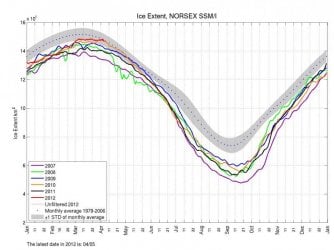OohPooPahDoo
Gold Member
Wow. You really do think you understand the paper better than its lead author. Must be hard to walk around being smarter than everyone at everything all the time.If the effects are poorly understood, it sounds as if this is a perfect alternative to the CO2 theory since this is also poorly understood.
If it was well understood, then the predictions would be accurate. They are not.
So, you're an astro physicist. Tell us what this part of the abstract means.
"Model calculations suggest that almost half of the global cloud condensation nuclei in the atmospheric boundary layer may originate from the nucleation of aerosols from trace condensable vapours4, although the sensitivity of the number of cloud condensation nuclei to changes of nucleation rate may be small5, 6. Despite extensive research, fundamental questions remain about the nucleation rate of sulphuric acid particles and the mechanisms responsible, including the roles of galactic cosmic rays and other chemical species such as ammonia7. Here we present the first results from the CLOUD experiment at CERN. We find that atmospherically relevant ammonia mixing ratios of 100 parts per trillion by volume, or less, increase the nucleation rate of sulphuric acid particles more than 100–1,000-fold."
1) It means exactly what it says.
2) It means CLOSE to the following: the role of cosmic rays in the formation of clouds is poorly understand, and here we present the first results from an experiment designed to investigate this. The addition of ammonia causes an increase in the formation of cloud seeds, and.....
Its cut off at the end because you picked a weird place to cut the abstract.
If this poorly understood, then it is the prefect alternative theory to CO2 causing warming which is also poorly understood.
